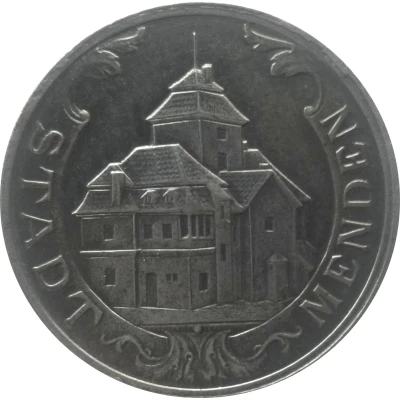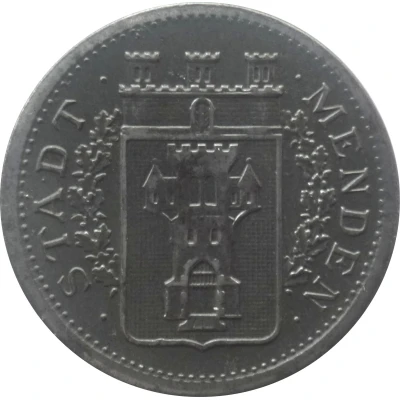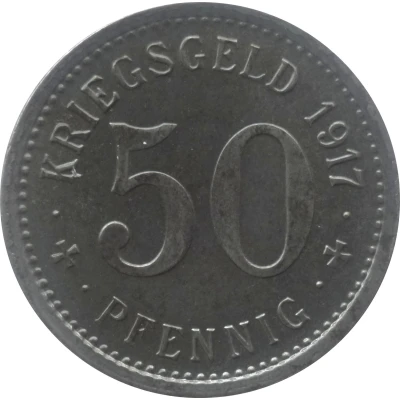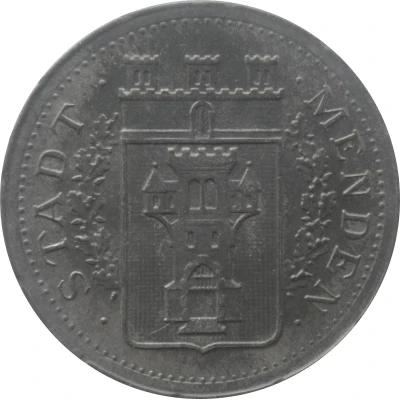
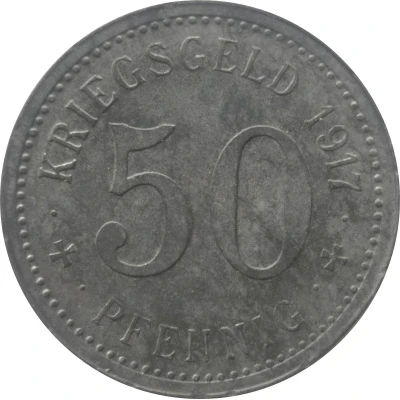

© Willem63 (CC BY-NC-SA)
50 Pfennigs - Menden
1917 year| Zinc | 3.31 g | 22.4 mm |
| Issuer | City of Menden (Prussian province of Westphalia) |
|---|---|
| Emperor | William II (Wilhelm II) (1888-1918) |
| Type | Standard circulation coin |
| Year | 1917 |
| Value | 50 Pfennigs (50 Pfennige) (0.50) |
| Currency | Mark (1914-1924) |
| Composition | Zinc |
| Weight | 3.31 g |
| Diameter | 22.4 mm |
| Thickness | 1.56 mm |
| Shape | Round |
| Technique | Milled |
| Orientation | Medal alignment ↑↑ |
| Demonetized | Yes |
| Updated | 2024-10-04 |
| Numista | N#65446 |
|---|---|
| Rarity index | 82% |
Reverse
Pearl rim, legend surrounding denomination centered
Script: Latin
Lettering:
KRIEGSGELD 1917
50
• ✠ • PFENNIG • ✠ •
Edge
Wide spaced ribs
Comment
Planchet variations 1.0mm - 1.5mmInteresting fact
The 50 Pfennigs coin from Menden (Prussian province of Westphalia) made of Zinc weighing 3.31 g is interesting because it was produced during a time of economic hardship and inflation in Germany during World War I. The coin was minted in 1917, and its low denomination and zinc composition were a result of the wartime economy and the need for a more affordable and accessible currency. Despite its low value, the coin remains a unique piece of history and a testament to the resilience of the German people during a difficult period.
